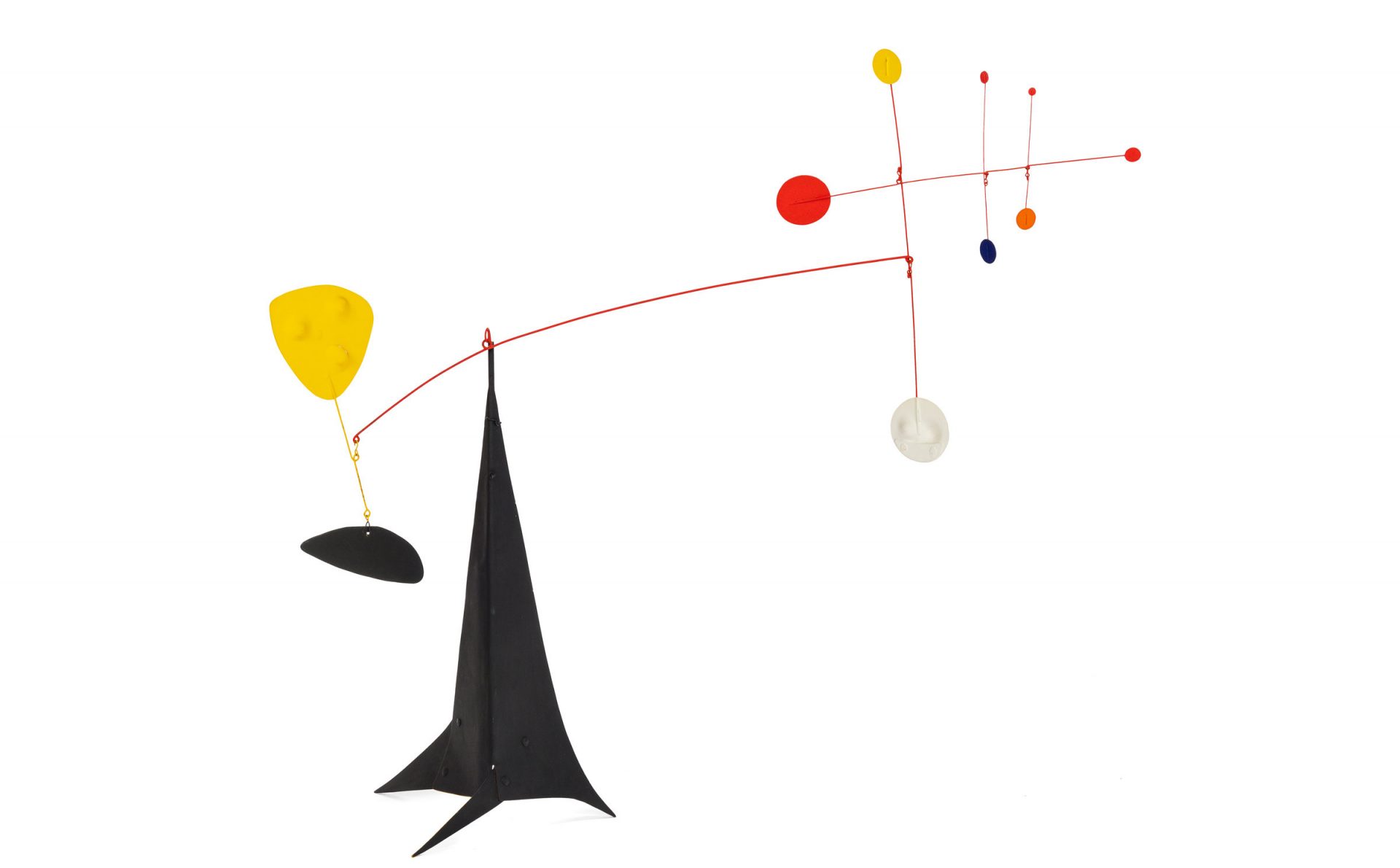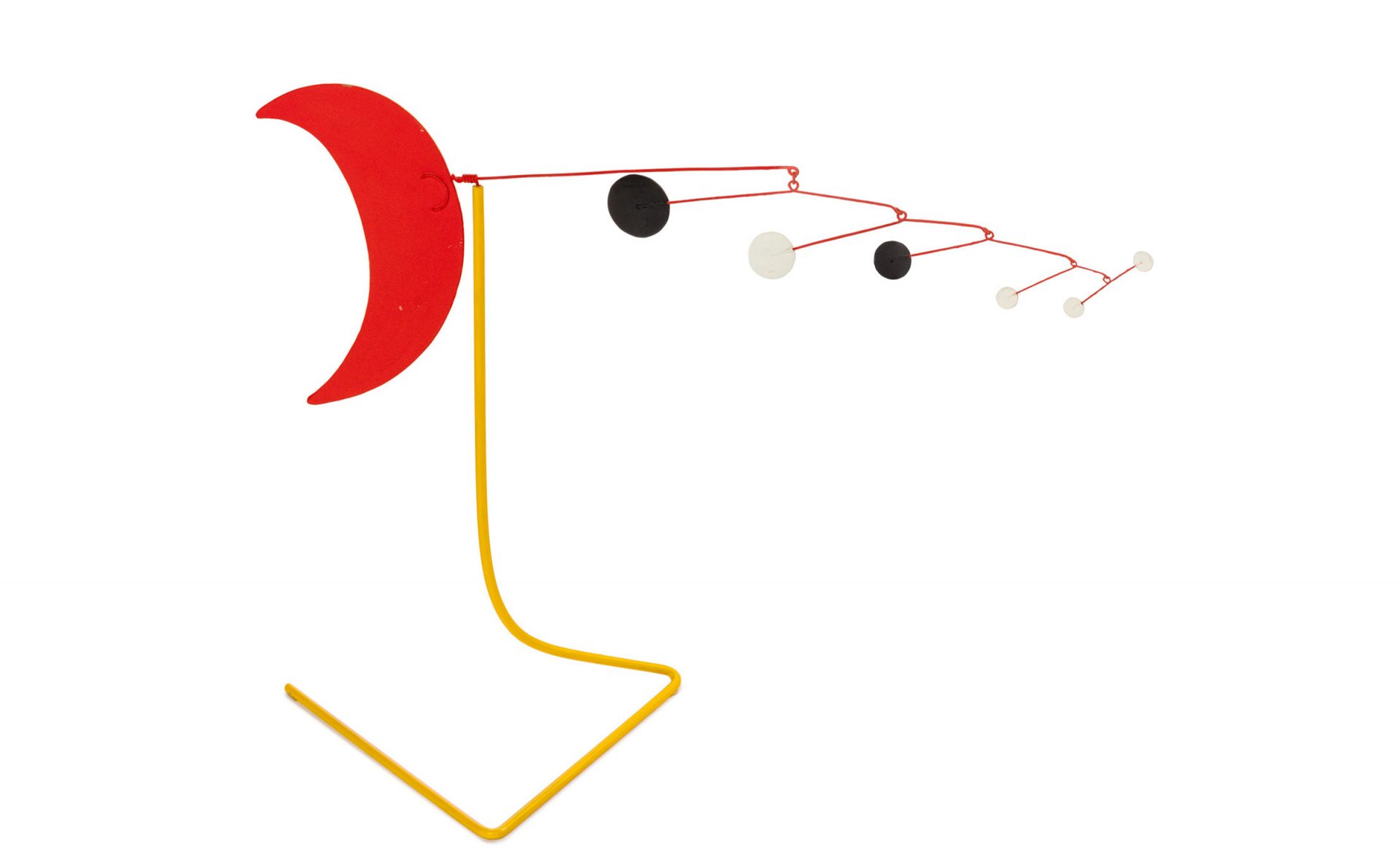
Alexander Calder Mobiles in October 1 Post War and Contemporary Art Auction
“When everything goes right a mobile is a piece of poetry that dances with the joy of life and surprises” (Alexander Calder, quoted in Jean Lipman, Calder’s Universe, London, 1977, p. 261).
Calder’s instantly recognizable kinetic sculptures revolutionized three-dimensional art in the early 20th century. In 1926, the young artist began a seven-year sojourn in Paris, where he absorbed European Modernism and was particularly influenced by the biomorphic forms, flat planes, and primary colors used by Piet Mondrian and Joan Miró. Calder used these motifs to invent his own artistic language, constructing sculptures brimming with dynamism and vibrancy. These innovative creations include static sculptures termed stabiles, kinetic sculptures called mobiles, and a hybrid, the standing mobile, with a kinetic sculpture attached to a non-moving base. All forms delight and awe with their irregular forms, bold colors, and flat planes, harmoniously balanced to move with the faintest breath of air.

LOT 63 | Alexander Calder (American, 1898-1976) Triple Cross, 1947
Executed in 1947, Triple Cross exudes a whimsy that belies its sophisticated construction. One of Calder’s standing mobiles, it reflects the artist’s training as a mechanical engineer, as well as his use of humble materials such as sheet metal and wire struts. A long thin rod balances on top of the swooping foundation and forms the basis of a chain-linked system of smaller rods. Biomorphic, metal shapes are attached to the terminal points of the rods and carefully counterbalance each other. The black base, all angles and curves, is a solid contrapuntal to the colorful, quivering construction that rests on top.

LOT 62 | Alexander Calder (American, 1898-1976) Petit poteau jaune (Little Yellow Post), 1963
Created toward the end of his storied career, Petit poteau jaune (Little Yellow Post), 1963 demonstrates through balance and movement a maker who has mastered his craft. The standing mobile takes its title from the yellow “post” composed of a triangular base that then extends vertically upward. Perched on top of the post is a wire with a red, crescent moon-shaped element connected on one side and a decrescendo of wires and round forms on the other. The juxtaposition of the large red crescent moon with the smaller black and white round elements creates a visual tension that gives the sculpture a unique presence. Calder’s desire to create an art that would resonate with life led to a constant engagement with the pull of gravity, the circulation of air, and the play of chance. The stable bases of Triple Cross and Petit poteau jaune (Little Yellow Post) support an intricate system of cantilevers that give the individual elements extraordinary mobility. Together, they express a delicate vitality and strength, testaments to Calder’s ingenuity and creativity.